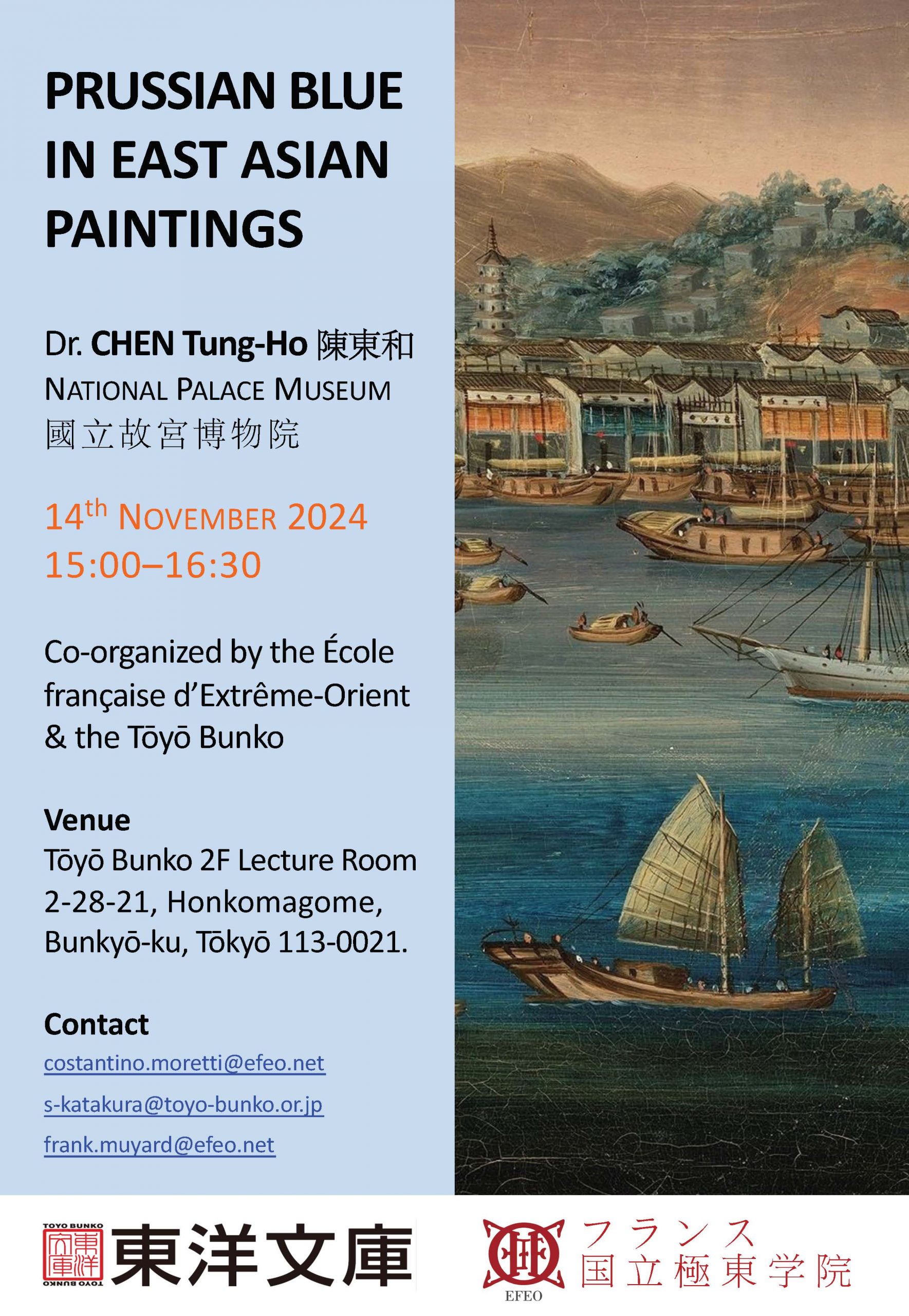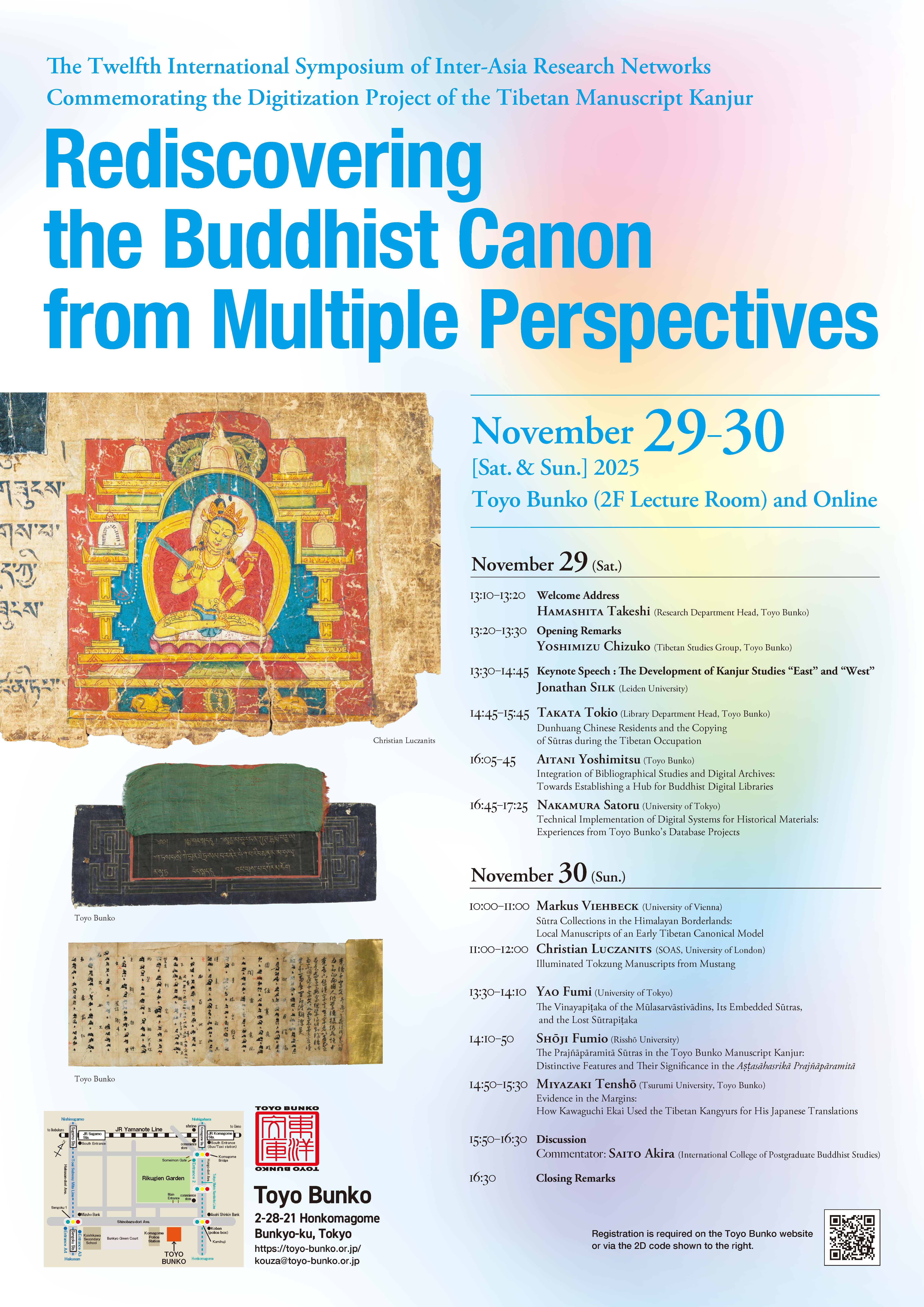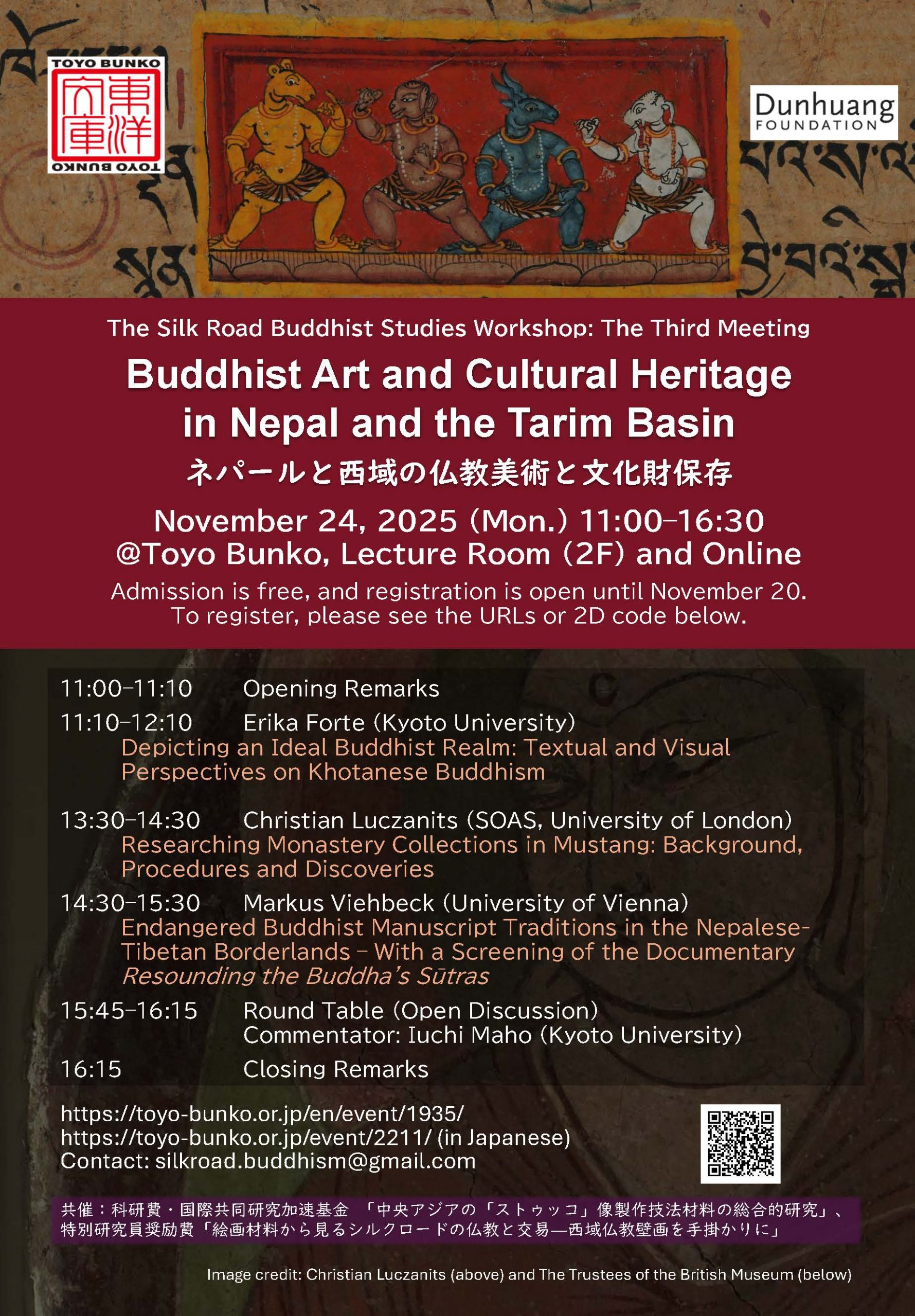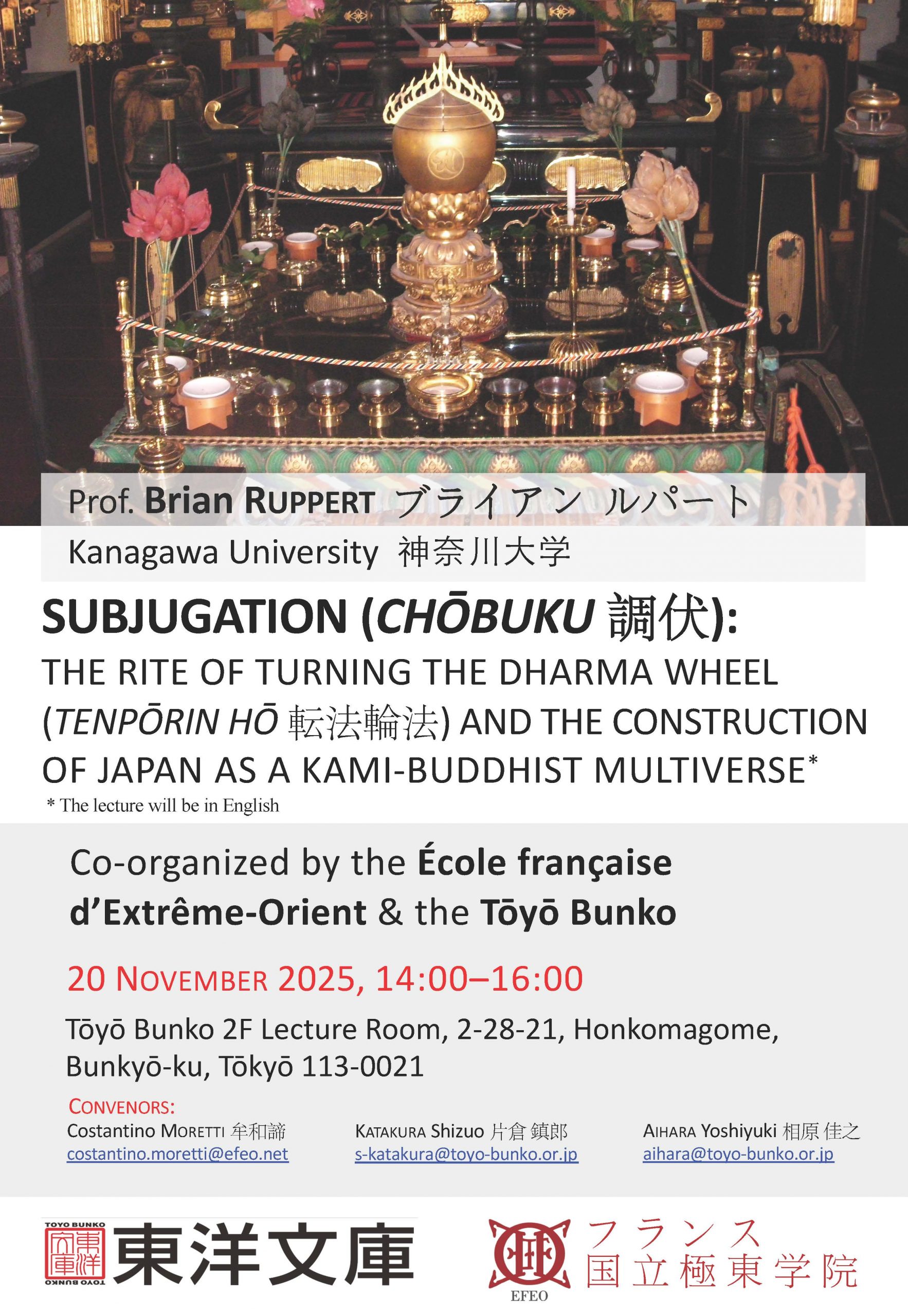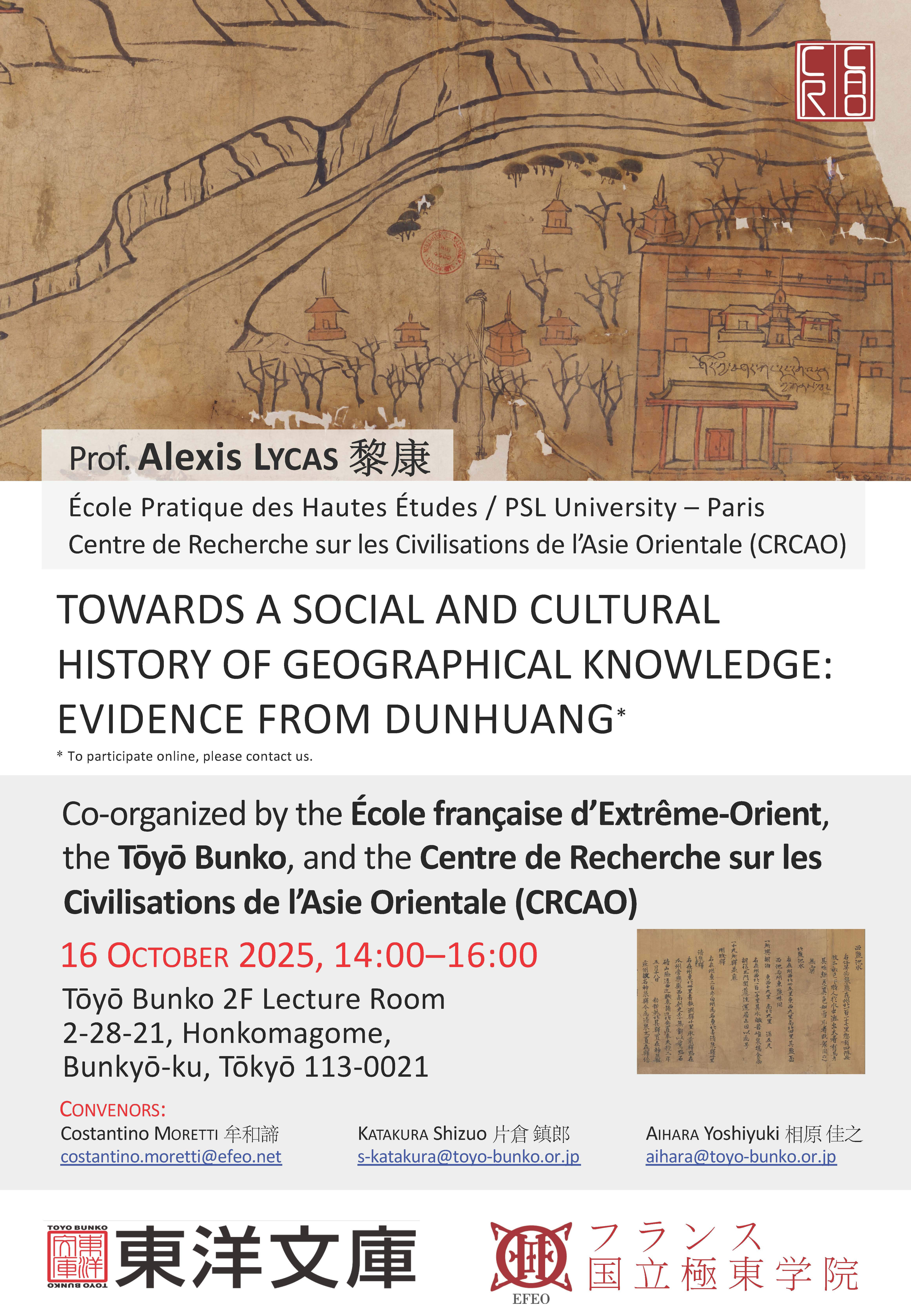- Seminars and Symposiums
Prussian Blue in East Asian Paintings
2024/11/14
15:00–16:30
| Date and Time | 2024/11/14 15:00–16:30 |
|---|---|
| Title | 『Prussian Blue in East Asian Paintings』 |
| Entrance Fee | Free |
| Venue | Toyo Bunko 2F Lecture Room (Online participation available) |
| Co-organizers | École française d’Extrême-Orient and Toyo Bunko |
| Presenter | Dr. CHEN Tung-Ho (National Palace Museum, Taipei) |
| Abstract | It is reported that Prussian blue was accidentally invented in around 1706 by Johann Jacob Diesbach, a paint manufacturer in Berlin, when he was trying to produce a red colorant. The earliest document mentioning Prussian blue is the letter written to Gottfried Wilhelm Leibniz (1646–1716) by Johann Leonhard Frisch (1666–1743) on March 31, 1708. As far as is known, the first employment of Prussian blue as a pigment of painting was found in the oil painting the Entombment of Christ, painted by Pieter van der Weff in 1709. The same pigment was also used in the works by the French painter Antoine Watteau in 1710. Although Prussian blue was found in a few works in Europe in 1710s, however, its circulation increased dramatically after the revelation of its production method in 1724 and became one of the main pigments of painting since the mid-18th century. In Japan, it is well known that the Prussian blue is widely used in the Japanese Ukiyo-e, mainly after 1829. The series of Thirty-Six Views of Mt. Fuji by Katsushika Hokusai (1760–1849) are certainly among the famous prints. Nevertheless, it was documented that the Prussian blue was first imported to Japan in 1747 through the Dutch East Indian Company (Vereenigde Oostindische Compagnie; VOC), and one of the early cases of using Prussian blue was recently found in one of the scrolls of Doshoku Sai-e (Colorful Realm of Living Beings) painted by Ito Jakuchu (1716–1800) in around 1765. The Prussian blue was also identified in some paintings of the late 18th century. In China, according to few analytical reports, Prussian blue was detected in some art objects of Qianlong period (1736–1795), Jiaqing period (1796–1820) and later. Prussian blue is also one of the main pigments frequently used in the export paintings of Canton in the 19th century. However, the earliest use of Prussian blue China remains to be explored. Our recent investigation on some paintings of Giuseppe Castiglione (1688–1766), a.k.a. Lang Shining, carried out at the National Palace Museum, shows that Prussian blue was used in a painting of the Yongzheng period (1722–1735) and thus indicates that the pigment has probably been imported to China around 1730. In this talk, I will introduce our current research on Prussian blue used in the East Asian paintings. |
| Presenter Profile | Dr. CHEN Tung-Ho is Associate Research Fellow of Conservation Department of National Palace Museum, Taipei, Taiwan. He earned his Ph. D in Materials Science from the Université de Versailles – Saint-Quentin-en-Yvelines (UVSQ) in 2005. During his stay in France, he worked in the Centre de Recherche et de Restauration des Musées de France (C2RMF) at the Louvre Museum for studying artifacts with different advanced analytical techniques. In 2006, he returned to Taiwan and worked in the National Synchrotron Radiation Research Center in Hsinchu as a Postdoctoral Researcher. Later, he joined the National Palace Museum in 2008, and has been developing the Scientific Research and Analysis Laboratory of the Museum. His research interests focus on material culture and exchange between Eastern and Western art, by using scientific techniques to study art objects including porcelains, painted enamels, pigments, etc. He has also organized several workshops and conferences on scientific scrutiny in art and archaeology during the past years. |
| Language | English |
| Contact | Costantino MORETTI (EFEO, Tokyo) KATAKURA Shizuo (Toyo Bunko) Frank MUYARD (EFEO, Taipei) *Please refer to the poster image for the respective e-mail addresses. |
*To participate online, please refer to the contact information above and contact us.
(Updated 2024/11/13)

